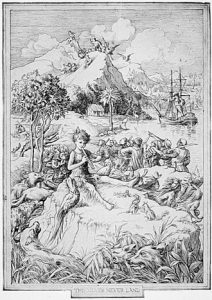49 Novel: Peter Pan by J.M. Barrie
Octaviano Gutierrez

Summary
Peter Pan is a fictional character created by Scottish novelist and playwright J. M. Barrie. A free-spirited and mischievous young boy who can fly and never grows up, Peter Pan spends his never-ending childhood having adventures on the mythical island of Neverland as the leader of the Lost Boys, interacting with fairies, pirates, mermaids, Native Americans, and occasionally ordinary children from the world outside Neverland.
Peter Pan has become a cultural icon symbolizing youthful innocence and escapism. In addition to two distinct works by Barrie, The Little White Bird (1902, with chapters 13–18 published in Peter Pan in Kensington Gardens in 1906), and the West End stage play Peter Pan; or, the Boy Who Wouldn’t Grow Up (1904, which expanded into the 1911 novel Peter and Wendy), the character has been featured in a variety of media and merchandise, both adapting and expanding on Barrie’s works. These include several films, television series and many other works.
Barrie commissioned a statue of Peter Pan by the sculptor George Frampton, which was erected overnight in Kensington Gardens on 30 April 1912 as a surprise to the children of London. Six other statues have been cast from the original mould and displayed around the world. In 2002, Peter Pan featured on a series of UK postage stamps issued by the Royal Mail on the centenary of Barrie’s creation of the character.
Peter Pan (Peter and Wendy)
You can read the full text here: “Peter Pan (Peter and Wendy) by J.M. Barrie” [Full Text].
Other formats on Project Gutenberg
You can read the full text here: “Peter Pan by J.M. Barrie” [Full Text].
Text Attributions
- Summary: Peter Pan by Wikipedia. Adapted by Octaviano Gutierrez © Creative Commons Attribution-ShareAlike 3.0 Unported Licence.
- A Millennium Fulcrum Edition produced in 1991 by Duncan Research. Note that while a copyright was initially claimed for the labor involved in digitization, that copyright claim is not consistent with current copyright requirements. This text, which matches the 1911 original publication, is in the public domain in the US.
